Save money and conserve water with Clearwater Industries CW-DI21 soil conditioner in conjunction with your drip irrigation system.
What Are Soil Conditioners?
Soil conditioners are products that improve soil’s physical properties. Common soil conditioners are fertilizers, but they can also be products that rebuild soils after poor soil management and farming practices.
In this case, CW-DI21 is a polymer soil conditioner used via drip irrigation systems that increases water movement in soils. Especially capillary water movement.
Water Loss = Money Loss
The water wasted during crop irrigation can add up to become a financial burden on crop growers. Plus, profits lost continue to add up when plants are stressed and unable to absorb necessary water and nutrients.
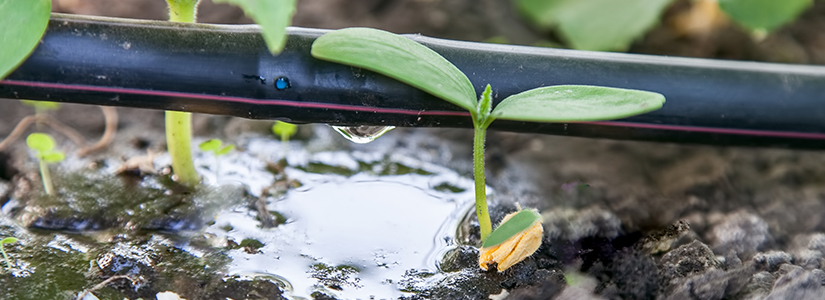
Use Less Water With CW-DI21
Using CW-DI21 with drip irrigation system (DIS) water helps increase the soil aggregates stability and therefore maintain the soil microporosity which is an essential characteristic for lateral distribution.
Increasing the soil aggregate stability also avoids slaking and maintain the soil hydraulic conductivity at its maximum potential at saturation (Ks) during the irrigation event and for various irrigation cycles.
All other parameters being equals (microporosity, soil structure, organic matter content, salt concentration, soil texture, etc.) using CW-DI21 offers:
- Wider wet bulb
- Quicker wet-bulb formation
- Better water and fertilizer management (up to 25% water saving)
- Better water availability for a plant (better nutrient uptakes, better photosynthesis efficiency, better carbon absorption, and higher productivity – enhanced plant metabolism)
- Increased capillarity for subsurface DIS
- Low viscosity ensures clog-free operation of all drip head types
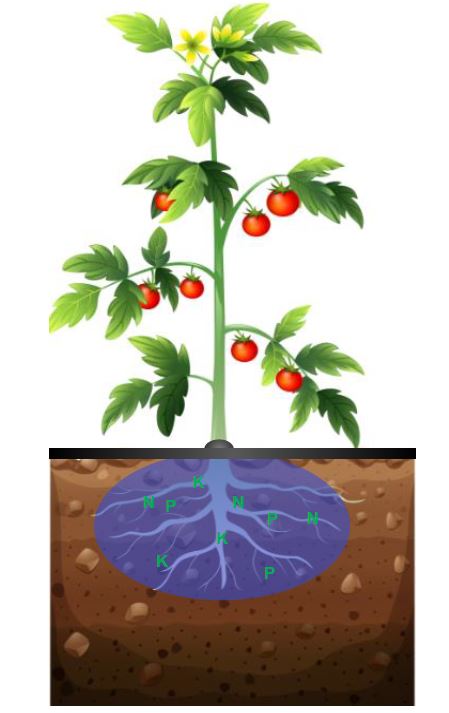
DIS Issues Without CW-DI21

By watering the soil through a small number of drippers, the DIS will saturate the closest soil aggregates too quickly and cause a phenomenon known as “soil aggregates slaking”.
Slaking of aggregates highly disturbs and diminishes the soil hydraulic conductivity by destroying the microporous network. The microporous network is necessary because it aids the lateral movement of water (by capillarity) and therefore the water distribution through the all-soil volume.
By reducing soil hydraulic conductivity, the wet-bulb formed by each dripper becomes too vertical. A vertical wet-bulb causes loss of water by percolation and loss of nutrients by leaching which reduces the crop root system development and potential crop productivity.
CW-DI21 In Action
Broccoli Harvest – Mexico 2020
This trial ran in Guanajuato (Mexico) showed the direct effect of poor water distribution (even in clay soil) under dry and hot conditions.
Without CW-DI21 (Control)
Clay soil 3 days after the last irrigation event. Broccoli – Mexico 2020.
Here the soil started to crust due to the lack of humidity in the upper layers and the plant started to stress and reduce its metabolic activity and therefore its development.

With CW-DI21
Clay soil 3 days after the last irrigation event. Broccoli – Mexico 2020.
Using CW-DI21 maintained humidity in the proper zone. Plants were not suffering and not slowing down their metabolism thanks to the better water availability.

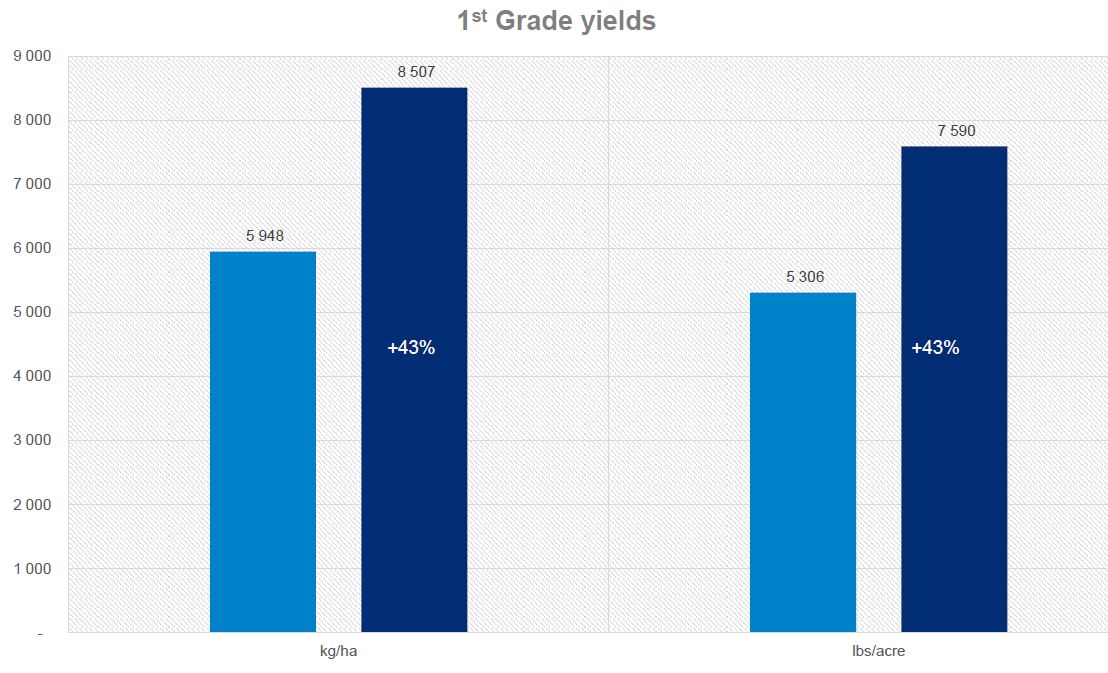
The use of CW-DI21 increased the 1st-grade broccoli yield by 43%.
Yields have reached 3.8 t/acre for treated fields while control was only 2.6 t/acre.
University of Georgia (Tifton Campus) Bell Pepper Field Trial – Yield Data
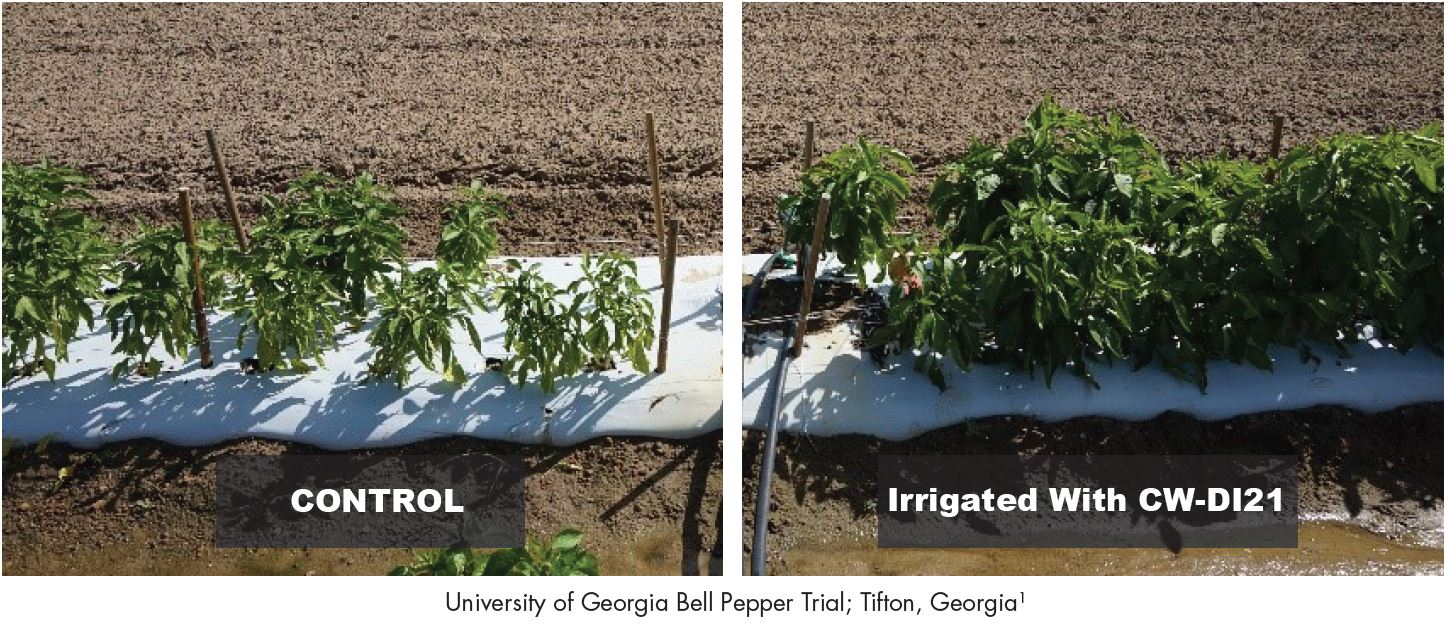
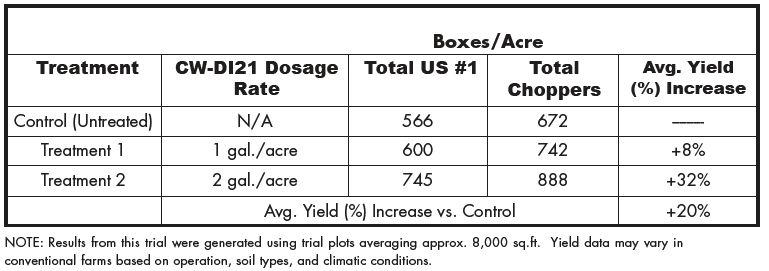
CW-DI21 treated plots showed greater yield increases with higher applied dosage vs. the Control (Untreated).
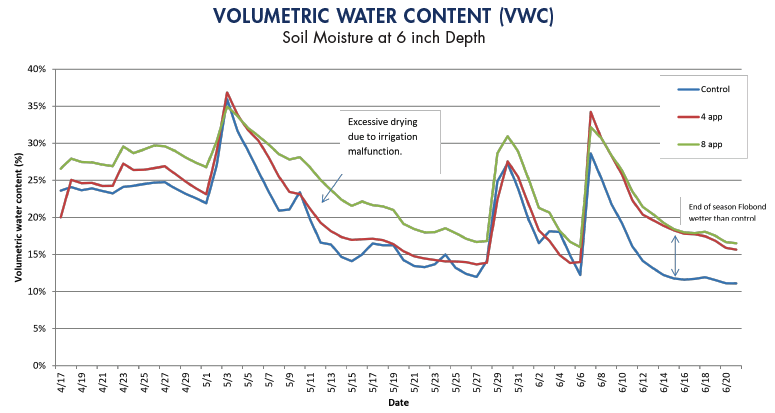
CW-DI21 Dosage Rate:
- 4 applications of CW-DI21 = 1 gal./Acre
- 8 applications of CW-DI21= 2 gal./Acre
At 6” soil depth, CW-DI21 treated plots measured increased Volumetric Water Content (VWC) during the trial on average approx. 3-5% vs. the Control. During dry periods, this product may help retain soil moisture within the plant bed.
CW-DI21 Is A Hydraulic Conductivity Enhancer

Directly measured soil volumetric water content shows poor water distribution and high loss of water by percolation. The plant root system is not in a comfortable situation and the plants are suffering from water stress because of poor water distribution.

Using CW-DI21 enhances water distribution and increases up to 50% the soil volumetric water content in the upper soil horizon, where the biggest part of the plant root system is located.
Xylematic Water Potential

Xylematic Water Potential is a method used to measure the “water tension” into Xylem (water and nutrients vascular system).
A low Xylematic Water Potential means that the plant is less stressed by the lack of water. With the same amount of energy received, plants transpire more, meaning that the nutrients uptake and metabolic activity are increased.
The effect of CW-DI21 in soil has a direct impact on plants’ Xylematic Water Potential and therefore on plants’ metabolism.
In that case, Xylematic Water Potential is closer to 0 on the treated plant, meaning that it is less stressed by the lack of water.
CW-DI21 Strengths & Opportunities
Strengths
- Saves on costs of water, fertilizer, and energy
- High cost/benefit ratio due to its efficiency and a constant need for better DIS water use.
- Can help to reduce water consumption or increase productivity under stressful conditions.
- Increases wetted soil area around plants while minimizing the volume of water applied.
- Enhances germination, rooting, and healthy plant development
- Improves yields and overall profitability
- Easy to use, compatible with other agrochemicals, and directly injected into DIS as any other liquid agrochemical.
- Requires no inversion or hydration prior to use
- Easy registration: as an adjuvant, it can be registered in most countries. USA, Brazil, Chile…
Opportunities
- DIS worldwide area increasing incredibly fast (+15%/year in Brazil for example).
- Partnerships planned with the worldwide DIS leaders (Rivulis, Netafim, etc.).
- Water is more and more scarce and critical in agriculture all over the world.
- Possible extension to large-scale crops (sugar in Brazil for example).


